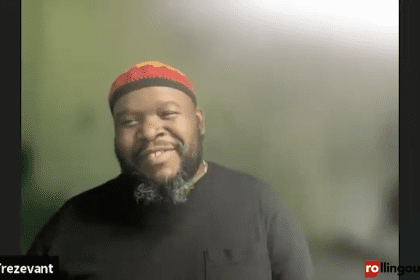In high school, when I started toying around with cameras and film, I was completely unaware of how significantly it would guide my life. What if pictures are not just pictures? What if I told you that they actually can teach us life lessons that can bring us closer to our full potential? These are some realizations that photography and film illuminated for me. Naturally, I wanted to share them with you.
1. Don’t always stand where you’re most comfortable.
When preparing to take a photo, we must first choose our vantage point. How we see things often depends on where we’re standing. We usually sit or stand in the same spot and take the photo at eye level; but what happens when we step out of our comfortable place and walk to a different spot, get down on one knee, or even climb a ladder or stairs for a higher perspective? We could possibly capture that moment in a fresh, new light and bring forth a uniquely outstanding image.
It’s the same in life.
When choosing your vantage point, your perspective is extremely important. Standing in the same spot will deliver the same results. When we seek fresh results, we must set our perspective in fresh places. Breaking from that comfort zone may be what’s needed to attract a breakthrough in life.
2. Represent something greater than yourself.
A photograph is representative of a moment that has only happened once, and is a reference point for something greater than itself. Notable photographers have the ability to spot significance in simplicity and focus on both the moment and whatever metaphorical weight it holds. This creates a piece of art that can impact the viewer on a level that even they are sometimes unaware of. Some could argue that there’s a line drawn — and it’s the difference between a mere picture and a photograph.
It’s the same in life.
We have the choice to view our life experiences as part of a greater purpose. Even the most menial things can impact the world. You’re not just smiling at a stranger, you may be saving someone’s life. You’re not just stacking bricks, but building a cathedral. When you choose to look at the bigger picture, petty things melt away and true purpose reveals itself.
3. Embrace ample light and shadow to maintain proper exposure.
A camera is a light box. We use it, along with lenses, to capture light onto a sensitive surface. Once the film is “exposed” to the light, an image is caught in time. If we don’t allow enough light into the camera, we’ll end up with an underexposed image. If there is too much light, however, the photo will be overexposed, impeding the viewer’s ability to interpret the image. Most quality photos have a good balance of highlights, shadows, and contrast; the great ones have awesome composition to boot.
It’s the same in life.
Our human experiences, the highs and lows, all represent the light of our existence. Our brightest moments and our dimmest days all paint the composition of our lives. The light to which we are exposed changes us, causes us to evolve, and creates memories within us that give us information from which we learn and grow. Embracing the various “levels of light” in my life helped me realize I am simply being properly exposed for a beautiful purpose.
4. Choose what’s in your frame. You deserve a beautiful composition
This one is simple. The universe has no edges; photographs do. This gives us an opportunity to include or exclude whatever we want in order to get the picture we desire.
It’s the same in life.
Most of the time, we have the power to choose the people, habits, thoughts, and actions that dwell in the permanent picture of our lives. If something doesn’t belong in your picture, crop it out. If something is missing from your picture, invite it into the frame or change your vantage point so that you can include it. I have the power to compose my life as beautifully as I can imagine. I can improve my life by mentally and physically “cropping out” bad habits, and working with my best resources — all in the effort to create my desired result.
5. Find your “magic” tools.
Magicians can manipulate visual perception to excite an audience or change its view of reality. Photography kind of does the same thing — we use the camera as a “magic wand,” of sorts, communicating, expressing a visual idea. You may not be into photography as much as I am, but I’ll bet money there’s a tool you have access to that has the ability to help you express yourself in a magical way. Whether it’s a music, culinary expertise, acts of service, or the ability to motivate — you have a tool that you can use to change people’s minds about the world. And if you can change people’s minds about the world, you can change the world itself.
Find your magic tool and start using it. It’s with you for a reason!
Crystle Roberson is a freelance writer and filmmaker residing in Atlanta and Los Angeles. She has been in the film industry for nearly a decade and has been a writer and photographer since high school. Since being honored by Women in Film & Television with the Woman to Watch Award in 2008, Crystle’s work has been featured on networks such as BET and ASPIRE and popular media outlets including The Huffington Post, JET magazine, The Source, Centric, rolling out, Shadow & Act, Bossip and more. Winning the HBO Filmmaker Award in 2009, Crystle has worked on projects such as “Red Band Society,” Think Like a Man Too and Zombieland. Her short film, Echoes premiered at the Cannes Film Festival Short Film Corner in 2013.

















